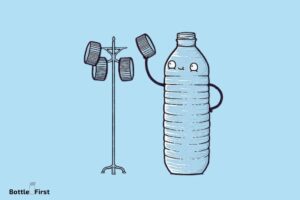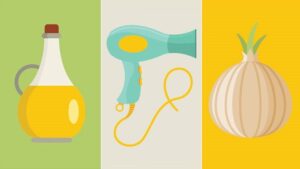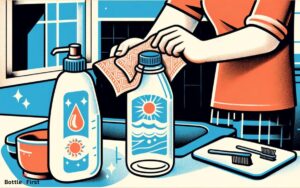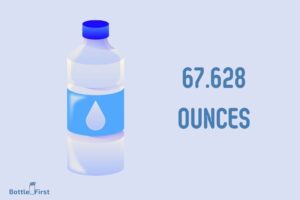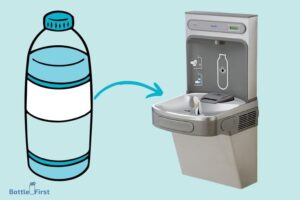Why is My Stainless Steel Water Bottle Rusting? Find Out!
Stainless steel is renowned for its corrosion resistance, largely due to the presence of chromium. The material typically contains at least 10.5% chromium, which reacts with oxygen in the air to form a passive chromium oxide layer.
This layer acts as a shield against rust. However, under certain conditions, stainless steel can rust.
Factors that contribute to rusting include:
For example, if a stainless steel water bottle is consistently exposed to salty air near the ocean, it might start showing signs of rust over time.
Maintain the luster and longevity of your stainless steel water bottle with proper care. Regular cleaning, prompt drying, and the avoidance of harsh detergents are key to preventing unsightly rust and ensuring your bottle stays in peak condition.
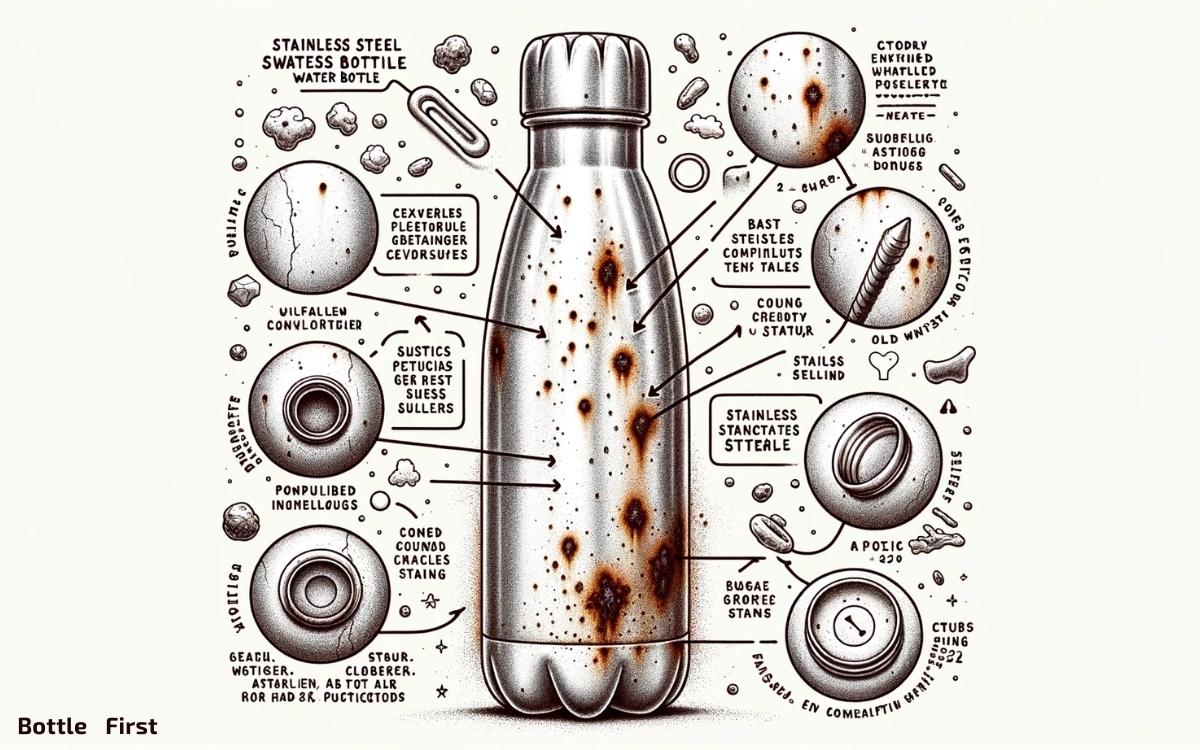
Key Takeaway
Understanding Stainless Steel Composition

Understanding the stainless steel composition requires examining its alloying elements and their proportions.
Stainless steel is primarily composed of iron, with chromium being the most essential alloying element. Chromium forms a thin oxide layer on the surface, providing stainless steel with its corrosion-resistant properties.
The addition of nickel further enhances its corrosion resistance, while molybdenum increases its resistance to pitting and crevice corrosion in chloride environments.
Other elements like manganese, silicon, and carbon play crucial roles in the steel’s strength, formability, and weldability.
Understanding these alloying elements and their precise proportions is vital in creating innovative stainless steel formulations that meet the diverse and demanding needs of modern applications, from medical devices to architectural structures.
Factors Contributing to Rust Formation
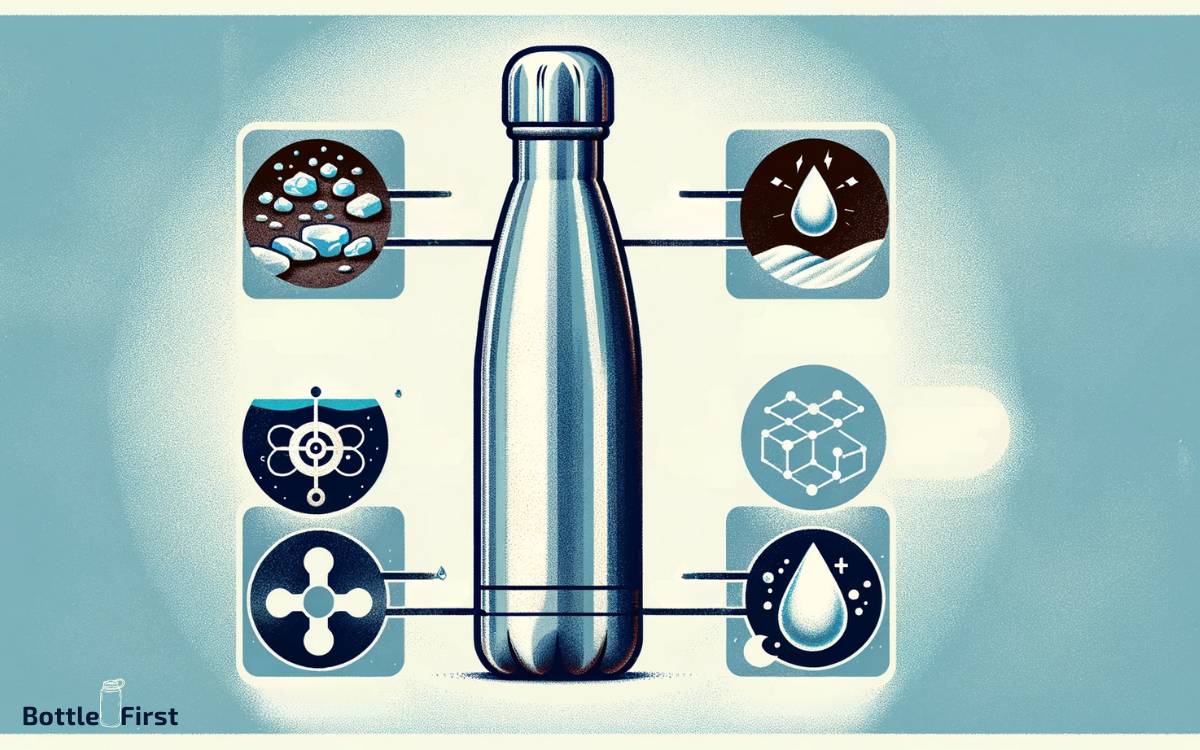
The formation of rust on stainless steel water bottles can be attributed to various factors, including exposure to moisture, acidic substances, and physical damage to the protective oxide layer.
These factors contribute to the breakdown of the passive layer that protects stainless steel from corrosion.
The following are the primary factors contributing to rust formation:
- Moisture: Prolonged exposure to moisture, especially in the presence of oxygen, can lead to the formation of rust on stainless steel water bottles.
- Acidic Substances: Contact with acidic substances, such as fruit juices or vinegar, can compromise the protective oxide layer and promote rusting.
- Physical Damage: Scratches, dents, or other forms of physical damage to the surface of the stainless steel can disrupt the protective layer, allowing rust to form more easily.
Understanding these factors is crucial for preventing rust formation and maintaining the quality of stainless steel water bottles.
Impact of Improper Cleaning Techniques
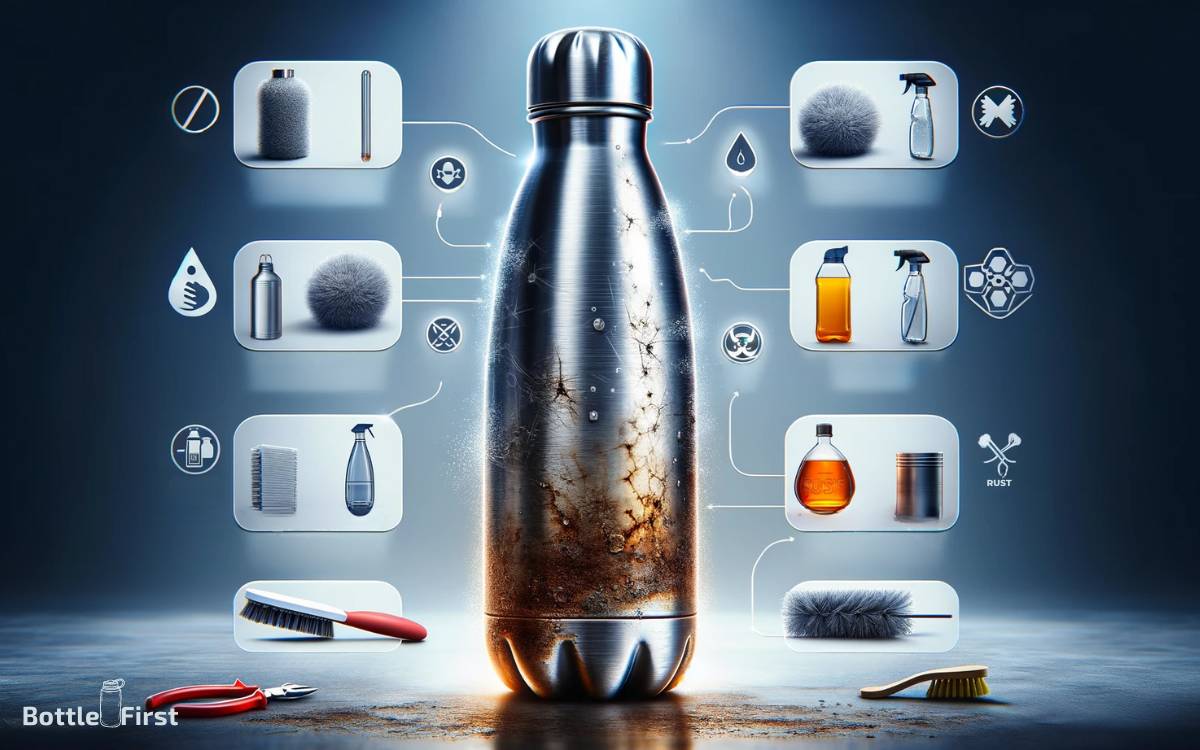
Improper cleaning techniques can significantly accelerate the corrosion process of stainless steel water bottles.
The use of abrasive cleaners, harsh chemicals, or rough cleaning pads can strip off the protective layer of the stainless steel, leaving it vulnerable to rust formation.
Leaving cleaning agents on the bottle for prolonged periods or improper rinsing can also lead to corrosion.
Innovative cleaning methods, such as using a soft cloth or sponge with mild detergent and warm water, can effectively remove dirt and stains without compromising the stainless steel surface.
Regularly drying the bottle after cleaning is also crucial in preventing moisture accumulation, which can contribute to rust.
Environmental Conditions and Rust
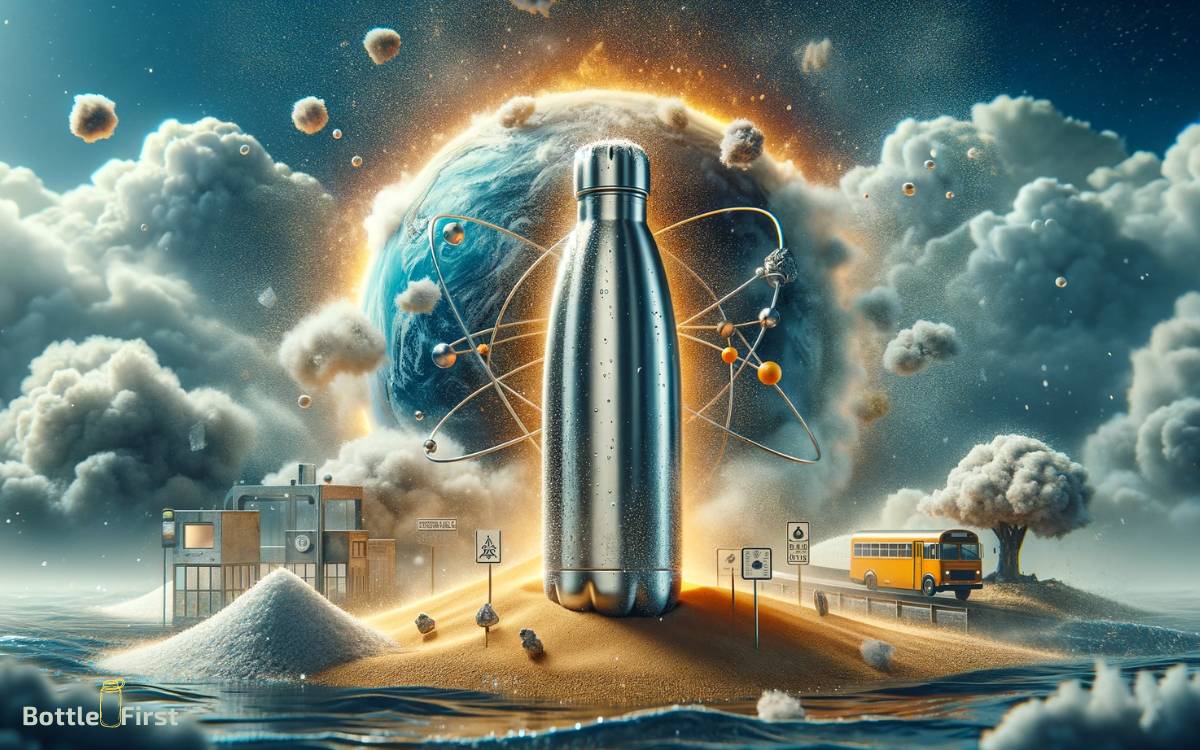
Environmental conditions play a crucial role in the rusting process of stainless steel water bottles, affecting the protective layer and overall integrity of the material.
The following factors can contribute to the rusting of stainless steel water bottles:
- Moisture: High humidity or exposure to water can accelerate the rusting process by breaking down the passive layer of chromium oxide on the stainless steel surface.
- Salt Exposure: Contact with saltwater or salty environments can lead to corrosion, as the chloride ions can penetrate the protective layer of stainless steel.
- Air Pollution: Industrial or urban areas with high levels of air pollution, especially those containing sulfur compounds, can corrode stainless steel surfaces.
Understanding and mitigating the impact of these environmental factors is essential for preserving the quality and longevity of stainless steel water bottles.
Maintenance and Prevention Tips
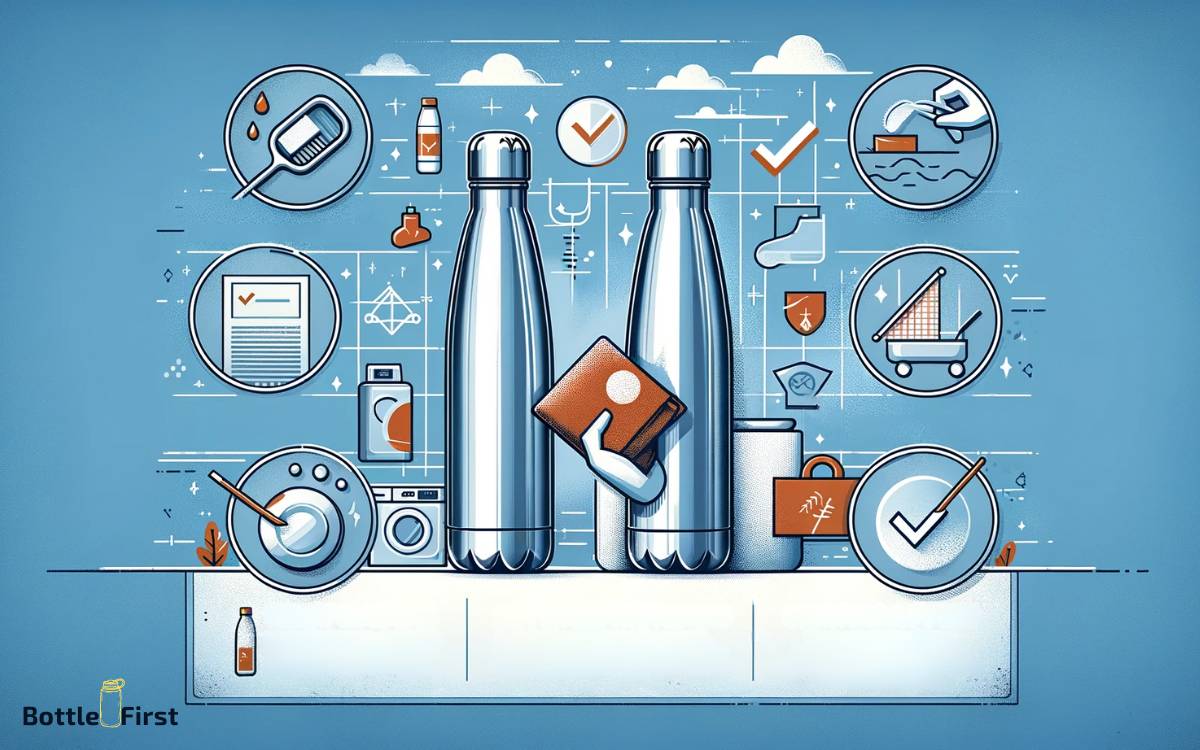
To maintain the integrity of stainless steel water bottles and prevent rusting, it is essential to implement regular cleaning and drying routines.
After each use, wash the bottle with warm water and dish soap, and use a bottle brush to reach all areas, especially if the bottle has narrow openings or intricate designs.
For a deeper clean, a mixture of vinegar and baking soda can be used to remove stubborn stains and odors.
Once cleaned, ensure the bottle is thoroughly dried, as moisture can contribute to rust formation. Storing the bottle with the lid off can help prevent trapped moisture.
Regular inspection for scratches or dents is also advisable, as these can compromise the stainless steel’s protective layer.
Conclusion
It is quite ironic that stainless steel water bottles can still rust despite their name.
Understanding the composition of stainless steel, the factors contributing to rust formation, the impact of improper cleaning techniques, and environmental conditions can help prevent rust.
By implementing proper maintenance and prevention tips, you can ensure that your stainless steel water bottle remains rust-free, despite the irony of its name.

